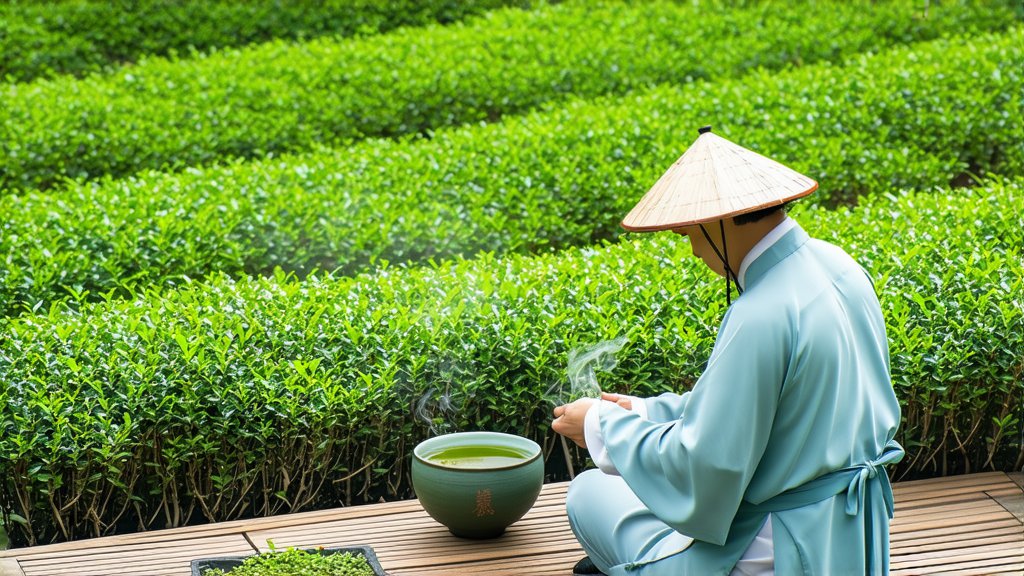
Longjing Tea, also known as Dragon Well Tea, is one of the most revered and celebrated varieties of Chinese green tea. With its origin tracing back to the Tang Dynasty (618-907 AD), this exquisite tea has captivated tea connoisseurs for centuries with its unique flavor profile, aroma, and health benefits. In this article, we will delve into the rich history, diverse varieties, intricate production process, and artful appreciation methods of Longjing Tea, offering international readers an insight into this quintessential Chinese tea experience.
History and Legends
The story of Longjing Tea begins in the picturesque village of Longjing, nestled on the banks of the breathtaking West Lake in Hangzhou, Zhejiang Province. According to ancient lore, during the Qianlong Emperor's reign in the Qing Dynasty, a divine dragon descended from the heavens and circled above the village before vanishing into the depths of the lake. Intrigued by this celestial occurrence, the emperor ordered the cultivation of tea plants in the area, naming them after the mythical creature – Longjing, or "Dragon Well." Over time, these tea gardens flourished, producing a tea so exceptional that it became a prized possession of the imperial court.
Varieties and Characteristics
Longjing Tea encompasses several distinct grades, each with its own set of characteristics and flavors. The highest quality, known as "Xihu Longjing" or "West Lake Dragon Well," is grown within the designated West Lake Scenic Area. This premium tea boasts a flat, spear-like shape resembling a well-rounded grain of rice, hence the moniker "Flat Tea." The leaves are bright green, glossy, and uniform in size, with a delicate, chestnut-like fragrance and a mellow, slightly sweet taste.
Other notable varieties include "Meiling Longjing" from Meiling Mountain and "Yuhang Longjing" from Yuhang Town. While these may not carry the same prestige as their West Lake counterpart, they still offer exceptional quality and represent the diversity of Longjing Tea production across the region.
The Art of Longjing Tea Production
The craftsmanship involved in creating Longjing Tea is a testament to the skill and dedication of Chinese tea artisans. The process begins in early spring when only the tenderest shoots and leaves are handpicked. These are then carefully selected based on their size, color, and overall freshness.
The next stage involves pan-firing, where the freshly harvested leaves are heated in a wok over high heat. This step serves two purposes: it halts oxidation, preserving the green color and fresh aroma, and it removes excess moisture, allowing the leaves to become pliable for shaping.
Shaping is perhaps the most distinctive aspect of Longjing Tea production. Master tea makers skillfully manipulate the leaves using their hands or specialized tools to achieve the characteristic flat, needle-like appearance. This labor-intensive process requires years of practice to perfect, ensuring that each leaf retains its unique shape and integrity.
Finally, the shaped leaves undergo a second round of firing at a lower temperature to further reduce moisture content and enhance the tea's flavor profile. The finished product is then sorted meticulously to ensure consistency in size and quality before being packaged for distribution.
Appreciating Longjing Tea: A Symphony of Senses
To truly appreciate Longjing Tea, one must engage all five senses in a harmonious tea ceremony. Begin by selecting a transparent glass or porcelain cup to showcase the vibrant green hue of the brewed tea. Use water heated to approximately 80°C (175°F) to avoid scalding the delicate leaves.
Add about 3-4 grams of loose tea per 200ml of water, allowing room for the leaves to unfurl gracefully. Steep for 2-3 minutes, observing how the leaves dance and release their essence. As you lift the lid or remove the infuser, take a moment to inhale the subtle, nutty aroma that wafts up, reminiscent of fresh chestnuts roasting over an open flame.
Take your first sip slowly, savoring the smooth, silky texture that glides effortlessly across your palate. Notice how the initial sweetness gradually transitions into a mild bitterness, followed by a refreshing aftertaste that lingers pleasantly. Allow yourself to be transported by the complex interplay of flavors, textures, and aromas that define Longjing Tea.
Conclusion
Longjing Tea stands as a shining example of China's rich tea heritage and the artistry involved in its creation. From its storied past steeped in legend to its meticulous production process and sensory delights, this iconic green tea continues to enchant both locals and visitors alike. Whether you are a seasoned tea enthusiast or a curious newcomer, exploring the world of tea, Longjing offers an unforgettable journey through the heart and soul of Chinese tea culture. So, why not embark on this delightful adventure today and discover the magic of Dragon Well Tea for yourself?